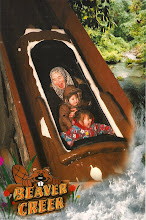Blogs
According to Wikipedia, a blog, the contraction of the term ‘web log’, “is a type of website, usually maintained by an individual with regular entries of commentary, descriptions of events, or other material such as graphics or video. Entries are commonly displayed in reverse-chronological order” Blogs are Web 2.0 sites.
In other words, blogs are web pages that work as personal or grupal journals that are written in chronological order. Blogs are very helpful for students to share information, to practice the language, to publish anything for free and to complement classes.
Types of blogs
Aaron Campbell (2003) in Izquierdo (2009) affirms that there are some blogs that can be used in language teaching such as: tutor blog, class blog and learner blog. In the first one, the teacher leads the blog and it can be used for assignments, homeworks, course information and syllabuses. Students can not write or post unless they are allowed by the teacher. In the second blog, both, teachers and students, can write and share opinions, information and thoughts. It is mainly used for discussion and extracurricular activities (practice writing skills for example). Finally, the learner blog requires more work and time from the teacher not only to set up but to moderate it. It is an online space for students, in which they are encourage to write in the target language and to practice, it is specially for them.
Advantages of blogsSome of the advantages of blogging are the opportunities for our students to practice language outside the classroom, it leads to cooperative learning because students read their classmates' post and can help each other with mistakes and share ideas, it encourages and motivates students to use the language.
Wiki
According to Wikipedia, a wiki “is a website that allows the easy creation and editing of any number of interlinked web pages via a web browser using a simplified markup language”. In a wiki you can include texts, videos, pictures, photos, gadgets and widgets, among others.
Basically, a wiki is a free web site that is really easy to create. It is a very friendly space that encourages people, students in particular, to participate and to share opinions and materials. It helps developing creativity and promoting collaborative work.
Most wikis serve a specific purpose and off topic material is promptly removed by the user community. Some examples of wikis are Wikipedia, Wikibooks, City Wiki and some more. PBworks, Webpaint, Wikia and Wikispaces are the most popular pages for those interested in creating a wiki.
Educational uses of a wiki
According to Izquierdo (2009) wikis are used for:
• Course syllabus and course contents
• Course projects
• Institutional web sites
• Forum – Discussions
• Events
• Online presentations
• Workshops
• A resource for teaching and learning
References
http://en.wikipedia.org/wiki
Izquierdo, E. (2009) Wikis
Subscribe to:
Post Comments (Atom)

No comments:
Post a Comment